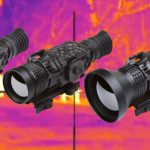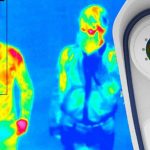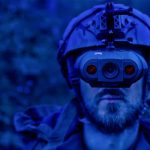It’s an amazing experiment and a whole new experience when you go hunting at night. The faint light of the moon and stars, which tries to break through the thicket of branches, occasionally illuminates what is happening. The world is shrouded in a silver haze, has no clear outline and is filled with only hints of the exuberance of life at this hour. A space where silence is stretched like the strings of a musical instrument, only occasionally responding with light, barely noticeable sounds. The romance of these moments cannot be conveyed by ordinary words. To feel it for real, filled with rich and subtle moments, it just needs to be experienced. Who knows, maybe it will seem uncomfortable, not interesting and in the future you will not want to repeat such an excursion, but it seems that every real hunter must experience these feelings and try themselves in absolutely different conditions and be ready for anything. One might say – hardened by water and fire.
And may our readers forgive us for such a lyrical digression. But it really wanted to plunge into this atmosphere, at least for a second, and try to entice you to join the ranks of experienced hunters. But now, given that we are talking about a serious activity that requires serious training, we need to understand in more detail the gadgets that will help you to carry out your plans and not return home empty-handed. So now we’re going to talk about night vision goggles, their types and how to choose between the two options. Specifically, between a NVD and a thermal scope.
Night Vision
The night vision device can be called a young invention. In fact, he is not even a hundred years from the date of its creation. It first established itself on the battlefields of the Second World War, gave impetus to the development of those devices that we use in our time. You may have seen an example of his picture in the movies, and you probably know that it is either gray or green. And what is the principle of its work. Immediately want to clarify an important detail that may affect your further choice and be more food for thought, because it does not work in complete darkness. It is this option just needs a source of light of the environment. Be it stars and the moon, or placed nearby lanterns, whose light is reflected from the surface of the surrounding objects.
And you can see the result of its work or in glasses or through the sight. It is a budget variant for hunting. Of course, when you get to the market you will see absolutely different price policy, which in turn depends on the generation. And we have three of them. The first generation is much cheaper from its successors. But also do not forget that the quality of the picture transmission, the detail, the distance it covers in much less light, will be somewhat worse. But it is your choice and you will be guided by your declared requirements to this device.
You can classify devices of this class as digital night vision. The work of which will be much better due to a different principle of operation. If in the versions mentioned above, the picture is processed through an amplifying tube, here the image is processed through a lens that catches the light. As a result, you see a black and white picture on the LCD screen. By the way this category will be a bit cheaper, unlike its predecessors, but in the work they are not inferior. And in some moments it is even better, because it provides its user with clearer image of what is happening around and this sight can be used even in the daytime.
However, with all its advantages, it is worth noting that this device is more capricious in operation, because it requires certain and favorable conditions. So, if you have made an outing at night in a dusty place or when there is fog around you, you will not get much from it.
Thermal Optics
From the name, we understand that thermal imagers read the radiated heat of the surrounding objects. This innovative technology has quickly established itself on the market among other night vision devices. And it has a number of compelling advantages.
Firstly, you can use it without any fear in pitch darkness or in difficult conditions, if you are sitting in the grass, for example, or you are caught in a fog. Because it does not need to process ambient light in order to convey you an image. And it “sees” the heat. There are versions of devices where you will observe a black and white picture. For example, you will see high temperature objects in bright white contrast against a dark background. Or there are devices that highlight your prey among other objects around you with bright colors (yellow, red). And looking through this sight you will as if see the aura of the object of your surveillance. By the way, one of the most important advantages, due to which many hunters decide to spend more money just on a thermal imager, is its ability to see objects at a very long distance. The very cool and expensive models can scan the terrain and track the heat source at a distance of 1000 yards. Yes, you may not be able to tell what kind of animal is quietly walking in the area. But at least you’ll be convinced you didn’t come in vain and have something to hunt. You will only have to get a little closer to make your shot more accurate and precise, not to wound the animal, but to provide him a quick not painful death and not to chase frightened prey through the whole night forest.
But for such quality, as we have already mentioned in passing, you have to pay not a small price to the manufacturer. And among other things, do not forget about the proper care of such things, so that soon such expensive equipment will not become a useless dust collector on the shelf in your hunting hut.
Night-Hunting Optics
If we talk about any specific models, experienced warriors advise to pay their attention to the Sightmark Photon Digital Night Vision. This is a digital night vision device, which can be purchased at a low cost. And its benefits do not end there. Its built-in infrared light will allow the hunter to track his prey at a distance of 100 yards. Plus it runs on just two AA batteries, this optic can be used during daylight hours, which is clearly a big plus in its favor. Otherwise, you have to change, zero in, and adjust the optics on your gun again. And if you want to increase the range of vision of your device, you can buy an infrared flashlight. And that option, will obviously be cheaper than the same quality thermal scope that will meet your requirements.
Be that as it may, your choice is entirely up to you. And before you buy such serious equipment, you need to study all the information you are interested in. Don’t forget that there is no absolutely perfect device. For one advantage there will be another disadvantage. In this article we have briefly described the basic and fundamental differences between the types and categories of night vision devices, which will help you understand in which direction to go and in which direction to direct your choice.



